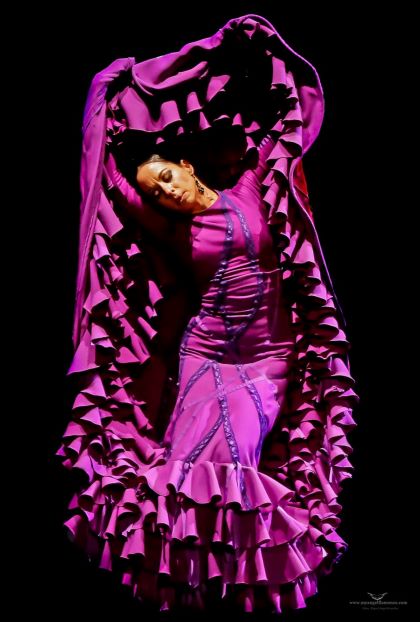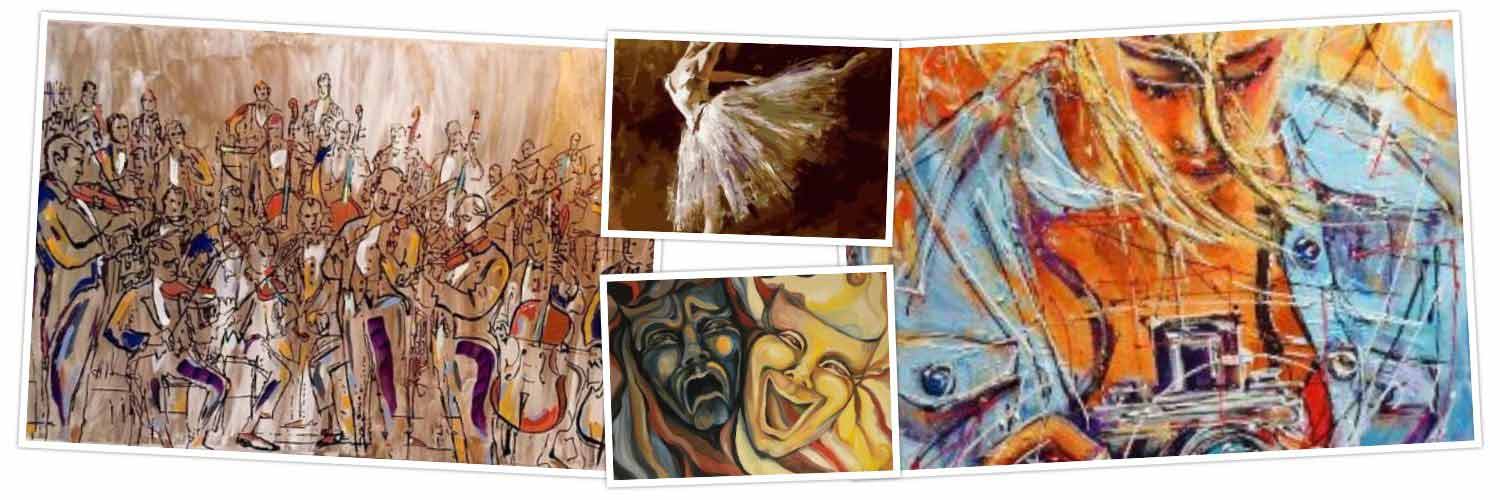Q&A with Tamara Adira, Founder & Artistic Director of Arte y Pasion
By JASMINA WELLINGHOFF, Editor
Your company will be presenting two flamenco shows this week, “Mercuria” on Thursday and “Yo Quiero Ser Humana” on Friday. Tell us about “Mercuria.”
The title, “Mercuria” is kind of a play on words. It’s a name of a woman, or of all the women performing in this piece. It’s not a character’s name per se, it’s more a symbol of women’s strength. I believe the woman’s strength is in her resilience, so there’s also the reference to mercury, the fluidity and the ability to move quickly and adapt. That’s woman’s strength in the face of adversity.
Is the show an amalgam of dance, poetry/spoken word, and music?
That is correct. The spoken word part of Mercuria consists of a solo part written and performed by Andrea “Vocab” Sanderson, and another part I collaborated on with her, which she is also performing.

The press release emphasized the participation of Spanish flamenco dancer, Belen Maya. Tell us a bit about her?
Belen Maya has been called one of the most important dancers of the century. About 20 years ago when I first started dancing flamenco, she was one of the first dancers that I studied. I never thought I would meet her; I just studied her work. During the pandemic, every dancer in Spain lost work opportunities, so they resorted to offering classes online. I took the classes. She is one of the innovative artists; highly contemporary. At the same time, she came from a long line of legendary flamenco dancers. We established a rapport and since then, she’s come to Texas a couple of time. She has really enjoyed it.
And what is the Friday show?
“Yo Quiero Ser Humana,” means “I want to be a Human Being.” This one is entirely Belen’s show. First, my company, Arte Y Pasion, will do a few independent numbers for Act I. after that is all Belen Maya. She interacts with the audience a lot. So, the show is never the same because it depends on the audience and what they say.
You have built your own, small outdoor amphitheater. How has that worked out for you?
I am so happy I did that. We built it during COVID. We had to find a way to keep our flamenco company going. The outdoor theater really helped us quite a lot. It helped our audiences, too, by enabling them to come to the show in a safe way. Coming out of the pandemic, we have a lot of competition, so the crowds are smaller now but it’s no less wonderful. Think of Shakespeare in the Park Meets Flamenco. I tell them bring your picnic, we’ll have some sangria for you or some hot tea, and enjoy flamenco under the stars. It’s really beautiful.
You told us in another interview that you experienced an immediate love for flamenco the very first time you saw a performance. What appealed to you so much?
For me, it was like a recovery of a lost memory. First of all, the flamenco music is very much alike to Judaic music, so it sounded familiar to me. In fact, everything about it seemed familiar and I didn’t know why. I was in New Orleans when I saw a show, and talked to one of the main dancers, and I showed up for a class the next day. I started with once a week, then twice a week, then three times a week, then after that I never stopped.

When you have a show featuring multiple dancers, is there a choreographer who harmonizes everything, or is each dancer doing her/his own choreography?
The answer is complex. We all come in with our own choreographies. However, I am the artistic director and I manage the overall look and concept of the show. But I have also contracted Belen to be my mentor, so as I direct the show, I consult with Belen to make sure that my choices make sense. Also, as dancers come with their own material, I ask them to impart intent to their dancing that relates to the subject matter that show is all about. In flamenco, every move and every sound has an emotion behind it, and the idea is for the dancer to take that movement and sound and make that emotion explicit to help tell the story. And the story is a series of vignettes. (In addition to Adira and Maya, other participating artists are Genevieve Obregon, Jose Manuel Tejeda, singer La Memphi, and poet Andrea “Vocab” Sanderson.)
Is San Antonio a good place for flamenco?
Any place is a good place for flamenco. San Antonio has a good number of artists who have chosen to devote themselves to flamenco. There are a lot of people who love flamenco in this town. I hope that all these artists can build a community and share a little bit more.
What is your favorite performance venue in San Antonio?
That’s a loaded question! OK, I’ll give you three: The Brick at Blue Star, the Carver Community Cultural Center and Carmen de la Calle. And another one, Toro, a Spanish restaurant that we have performed at, downtown, but they are also on 1604.
Anything you would like to add to this interview?
I would like people to understand that Belen Maya is a big star in our world. She is like Prince, or David Bowie. She is an icon, a living legend of this century.
——————————————————————————————————————–
“Mercuria,” Nov. 3 at 7 p.m.; Brick at Blue Star Arts Complex, 108 Blue Star Arts Complex; for tickets go to https://arteypasion.ticketleap.com/mercuria-nov3/; “Yo Quiero Ser Humana,” Nov. 4 at 7 p.m.; Arte Y Pasion Outdoor Amphitheater (location to be disclosed upon purchase of ticket; tickets at https://arteypasion.ticketpleap.com/mercuria-nov.4/ Tickets are $30 general admission and $15 standing room at Brick. For more info call 210-241-2771 or visit www.arte-y-pasion.com
